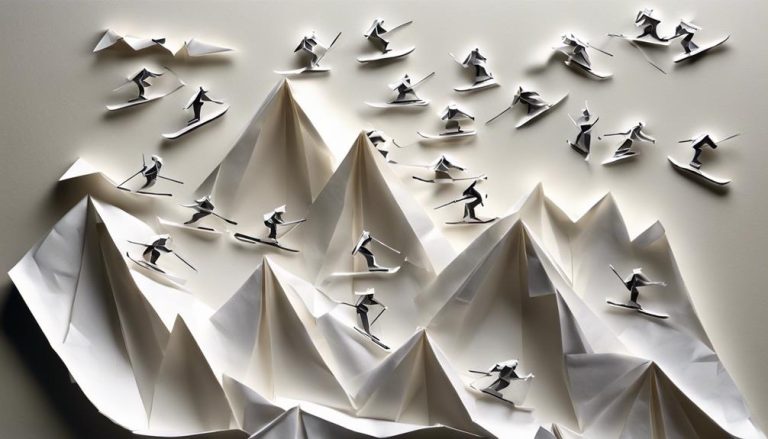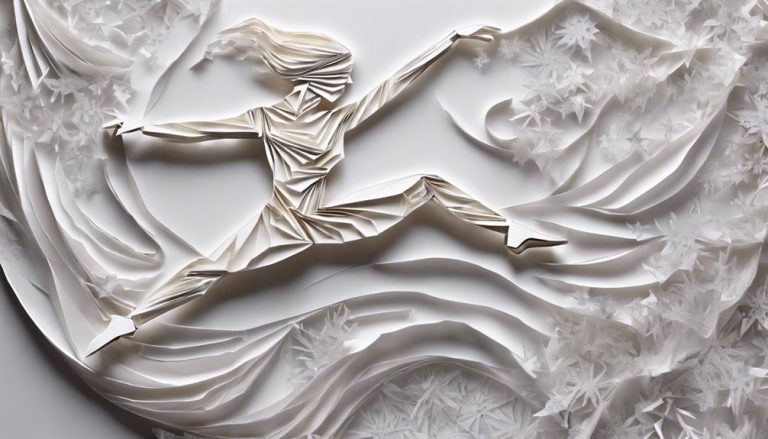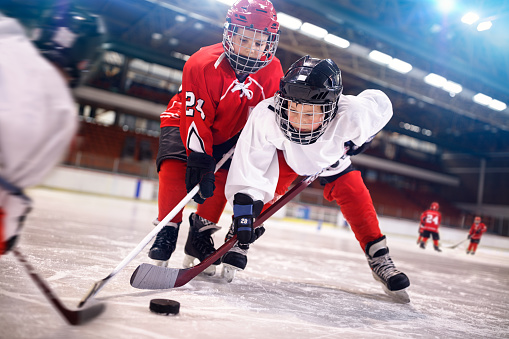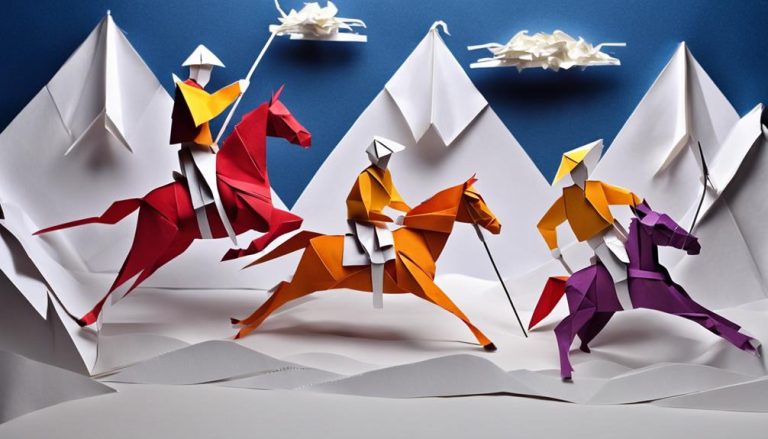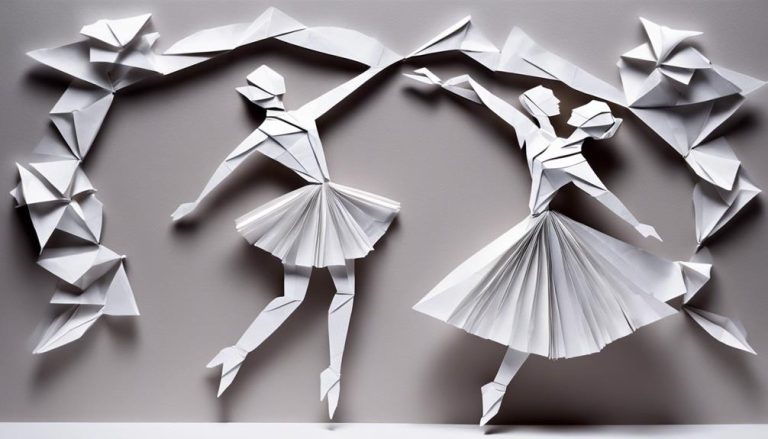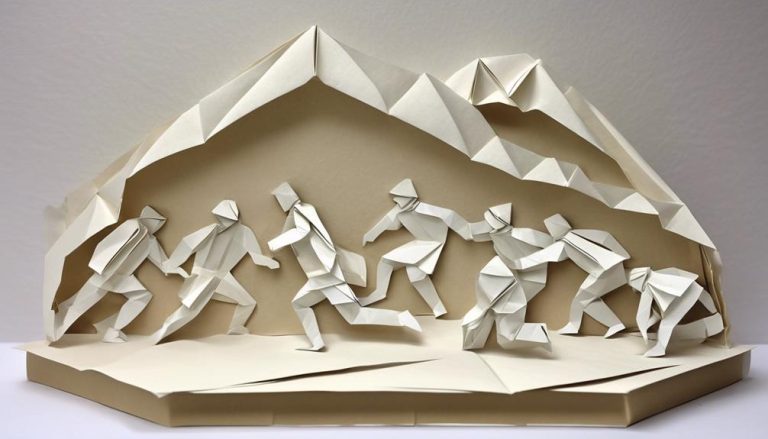General Rules of Slopestyle Snowboarding
Did you know that slopestyle snowboarding competitions have specific guidelines for scoring each rider's performance? Understanding the intricacies of these rules can greatly impact your overall performance and success in competitions. From the equipment requirements to the judging criteria and trick difficulty levels, there are various aspects to consider when competing in slopestyle snowboarding. So, let's break down the general rules that govern this thrilling winter sport and ensure a fair and exciting competition for all participants.
Scoring System
When judging slopestyle snowboarding, the scoring system meticulously evaluates each rider's performance on various elements of the course. Judging accuracy is paramount to maintain competitive integrity. The scoring transparency ensures that athletes receive feedback on their runs, allowing them to understand how points were awarded and where improvements can be made.
The precision of the scoring system is what sets slopestyle snowboarding apart. Every grab, spin, and jump is scrutinized to ensure fairness and accuracy in the judging process. This level of detail not only benefits the athletes by providing a clear understanding of their performance but also enhances the overall integrity of the competition.
Athletes thrive in an environment where their efforts are recognized and rewarded fairly. The scoring system in slopestyle snowboarding not only accomplishes this but also pushes riders to continually improve and innovate their tricks. It is this blend of judging accuracy, competitive integrity, scoring transparency, and athlete feedback that makes slopestyle snowboarding a thrilling and liberating sport to be a part of.
Safety Guidelines
In order to fully embrace the exhilarating challenges of slopestyle snowboarding, understanding and adhering to essential safety guidelines is paramount. Safety gear is your best friend on the slopes. Make sure to always wear a helmet to protect your head from potential injuries. Additionally, invest in proper goggles to shield your eyes from snow, wind, and debris. Wearing wrist guards can also prevent common snowboarding injuries like wrist fractures. When it comes to training techniques, start by mastering the basics before attempting more advanced tricks. Progress gradually, and always warm up to prevent muscle strains. Take lessons from certified instructors to learn proper form and technique, which can significantly reduce the risk of accidents. Remember, safety should always be your top priority to ensure a thrilling and injury-free experience while conquering the slopes. So gear up, train smart, and enjoy the liberating rush of slopestyle snowboarding!
Equipment Requirements
Properly selected and well-maintained equipment is crucial for maximizing your performance and safety in slopestyle snowboarding. To ensure you have the best setup for conquering the slopes, consider the following:
- Proper Snowboard Sizing: Selecting the right snowboard size based on your height, weight, and riding style is essential for control and maneuverability on the course. Pair this with suitable boots that offer comfort and responsiveness to enhance your riding experience.
- Helmet and Protective Gear Requirements: Safety should always be a top priority when hitting the slopes. Make sure you have a certified snowboarding helmet that fits snugly and protective gear such as wrist guards, knee pads, and back protectors to prevent injuries during jumps and tricks.
Equipping yourself with the right gear not only boosts your performance but also safeguards you from potential risks, allowing you to push your limits and enjoy the thrill of slopestyle snowboarding to the fullest.
Course Layout
Now, let's talk about the heart of slopestyle snowboarding – the course layout. The jump features are meticulously placed to challenge your skills and creativity, allowing you to showcase your best tricks. The rail options provide a playground for you to grind, slide, and add your unique flair to each run.
Jump Features
Navigating the jump features on a slopestyle snowboarding course requires precise timing and skillful execution to achieve maximum air and style. When approaching these exhilarating features, remember the following:
- Jump Technique: Focus on your form and posture in the air to maximize height and control.
- Landing Precision: Aim to land smoothly and squarely on the slope to maintain speed and flow.
- Speed Management: Adjust your speed to match the size and distance of each jump for optimal performance.
- Visualize Success: Picture yourself soaring through the air with finesse and confidence to enhance your overall performance.
Mastering these elements will not only elevate your performance but also unlock the true essence of slopestyle snowboarding.
Rail Options
When approaching the rail options on a slopestyle snowboarding course, focus on your balance and technique to conquer these challenging features with finesse and precision. Rail options offer a canvas for your creativity to shine through trick progression. As you glide across the rails, mastering landing techniques is vital for a smooth transition to the next feature. Your balance control and body positioning are key elements in tackling rails of various shapes and sizes. Engage your core, stay low, and distribute your weight evenly to maintain stability. With each rail conquered, you elevate your riding to new heights, pushing the boundaries of what is possible on the course. Embrace the challenge, and let your passion for snowboarding drive you to master the rail options with style and grace.
Trick Difficulty Levels
When it comes to the points awarded in slopestyle snowboarding, understanding trick difficulty levels is crucial. The complexity of tricks directly correlates with the skills required to execute them flawlessly. The impact of trick difficulty on a rider's overall score cannot be underestimated, as it can make or break their performance on the course.
Trick Complexity Levels
Mastering trick complexity levels in slopestyle snowboarding requires a deep understanding of each trick's technical demands and execution intricacies. To excel in this realm, consider the following:
- Trick Progression: Build your skills gradually, starting with basic tricks before moving on to more complex maneuvers.
- Competition Strategy: Tailor your trick selection to maximize points based on the competition's judging criteria.
- Risk Assessment: Evaluate the potential dangers of each trick and weigh them against the rewards.
- Trick Execution: Focus on perfecting your technique to ensure consistency and style in every trick you perform.
Skill Requirements for Tricks
To excel in slopestyle snowboarding, understanding the skill requirements for tricks is essential for mastering trick difficulty levels. Trick progression is crucial, starting with basic tricks and gradually advancing to more complex ones. Training methods play a vital role in honing your skills, including practicing regularly, working on strength and flexibility, and seeking guidance from experienced riders. Trick execution demands precision and control, focusing on body movements, timing, and balance. Mental preparation is key to conquering challenging tricks, requiring focus, determination, and confidence. Visualizing the trick before attempting it can enhance your performance. By continuously pushing your limits, refining your techniques, and staying resilient, you can elevate your snowboarding skills and conquer any slopestyle course with flair.
Impact of Trick Difficulty
Understanding the impact of trick difficulty levels is crucial for advancing in slopestyle snowboarding and pushing your skills to new heights. When delving into the realm of more challenging tricks, consider these key factors:
- Injury risks: As trick difficulty increases, the likelihood of accidents rises. Proper training and technique are paramount to minimize these risks.
- Skill progression: Conquering harder tricks propels your abilities forward, leading to a more versatile and accomplished riding style.
- Psychological challenges: Overcoming the mental barriers associated with difficult tricks is a significant part of the journey, requiring focus and determination.
- Adrenaline rush: The thrill of mastering a tough trick brings an unparalleled sense of accomplishment and excitement, fueling your passion for the sport.
Judging Criteria
When evaluating a slopestyle snowboarding run, judges meticulously assess various elements to determine the overall score. They focus on style points and technical execution, looking for seamless transitions, fluid movements, and clean landings. The way a snowboarder approaches jumps, rails, and other features speaks volumes about their skill and mastery of the sport. Creativity and risk-taking are also key factors that judges consider. Snowboarders who push the boundaries with innovative tricks and combinations stand out and are rewarded for their originality.
In slopestyle competitions, it's not just about executing difficult tricks but doing so with finesse and flair. Judges appreciate riders who bring something unique to the table, who aren't afraid to take chances and try new things. The element of risk adds excitement to the run and showcases the rider's bravery and determination. A successful slopestyle run combines technical proficiency with creativity, resulting in a performance that captivates both the judges and the audience.
Competition Format
Exploring the intricacies of the competition format in slopestyle snowboarding reveals the strategic and dynamic nature of this thrilling sport. When delving into the competition format, it's crucial to understand the following:
- Judging Process: The judging process in slopestyle snowboarding is meticulous, with judges assigning scores based on criteria like difficulty, execution, amplitude, variety, and progression. Understanding how these elements are evaluated can help athletes tailor their runs for maximum impact.
- Athlete Preparation: Athlete preparation is key in slopestyle competitions. From perfecting tricks to mental visualization, competitors must be in peak condition both physically and mentally to tackle the challenges of the course.
- Competition Structure: Slopestyle competitions typically consist of qualifying rounds followed by finals, where athletes have multiple runs to showcase their skills. The best run out of the series is usually counted towards their final score.
- Scoring System: Scores in slopestyle competitions are usually based on a 100-point scale, with judges awarding points for each run based on the aforementioned criteria. Understanding the scoring system is crucial for athletes aiming to excel in this high-stakes environment.
Etiquette and Sportsmanship
Mastering the art of etiquette and sportsmanship is fundamental for every slopestyle snowboarder aiming to elevate their performance and contribute positively to the competitive atmosphere. In the world of slopestyle snowboarding, sportsmanship is not just a nice-to-have but a cornerstone of the community. It's about more than just following the rules; it's about embodying respectfulness towards your fellow riders, the judges, and the sport itself.
Sportsmanship in slopestyle snowboarding means celebrating your competitors' successes as much as your own. It means acknowledging a great run from a rival and pushing each other to new heights. Respectfulness towards the course, officials, and other riders creates a harmonious environment where everyone can thrive. Remember, your attitude and actions reflect not just on you but on the sport as a whole.
Frequently Asked Questions
What Are Some Common Strategies or Tactics Used by Slopestyle Snowboarders During Competitions?
When shredding the slopestyle course, your success hinges on your trick selection and line choice. Mastering the judging criteria and mentally preparing for the challenge are vital. Embrace the thrill and push your limits!
How Do Weather Conditions, Such as Wind or Snowfall, Impact a Slopestyle Snowboarding Competition?
When you're out there, weather can be your ally or nemesis. Wind might throw off your jumps, snowfall can mess with your visibility. Adjusting competition strategies becomes crucial in adapting to these wild elements of nature.
Can Competitors Choose Their Own Music for Their Runs During a Slopestyle Competition?
You bet! In slopestyle, choosing your tunes is like fuel for your soul. The right beats can amp you up, sync your moves, and vibe with the crowd. It's your showtime, make it epic!
Are There Any Specific Training Exercises or Drills That Slopestyle Snowboarders Typically Use to Improve Their Skills?
To enhance your skills in slopestyle snowboarding, you can focus on strength training and balance drills. Additionally, mental preparation is key; utilize visualization techniques to envision flawless runs, boosting your confidence and performance.
How Do Slopestyle Snowboarders Balance Competition Schedules With Other Commitments, Such as School or Work?
Finding the perfect balance between your competition schedule and other commitments is like riding a finely tuned snowboard down a challenging slope. It's all about time management, prioritizing, and maintaining mental focus during competition preparation.

